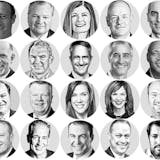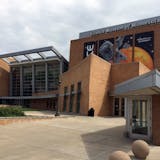In introducing himself to his new fan base out west, Michael Cuddyer fielded questions from readers in the Denver Post. One question regarding the outfielder's excitement towards switching ballparks – from Target Field to Coors Field – incited the former Twin to sing a familiar tune (emphasis mine):
Stop me if you have heard this one before but since Target Field opened you have been subjected to a barrage of data, some scientific insight and anecdotal observation from players -- of which you can now add Cuddyer's name to a list that already includes Delmon Young, Justin Morneau and Jason Kubel -- which speaks to the cavernous play of the Twins ballpark and the effects on the players.
The fact is that for the most part the Twins carried the same core group of hitters from the Metrodome days into their new home. Hitters like Michael Cuddyer and Jason Kubel performed well inside that configuration but have scuffled since moving outdoors. They are not the only ones. In the final two years at the Metrodome, the Twins hit 152 home runs. However, now with two seasons into the Target Field era, they have hit just 98 home runs – the third fewest home runs at home in baseball. Injuries, age and other factors all should be consider yet the biggest change has to be the environment.
If you are a decision-making member of the Twins' front office, what would you do?
One important aspect of constructing a roster is understanding how the personnel fit into your home ballpark. After all, you play 81 games a year at your home field, it's best to find a lineup that plays best to that environment.
For instance, at Fenway Park in Boston, the left field Green Monster is whisper away from the infield dirt at 310 to 315 feet. Therefore, it would behoove the Red Sox to skimp on the left-handed starters – which they have, keeping Jon Lester as the only lefty in the rotation consistently dating back to 2000. Likewise, it would also benefit the club to fill the lineup with right-handed pull hitters who elevate the ball to left (or someone like left-handed like Adrian Gonzalez who is very adept at going the other way).
That's one such extreme example but other stadiums have their own advantages. Dodgers Stadium favors power hitters to center field and it is no surprise Dodgers' center fielder Matt Kemp paced baseball with 21 center field home runs (the next closest was 13 by Ryan Howard). Seattle, meanwhile, has struggled to find right-handed power considering Safeco Field is a challenge for righties -- an 82 Park Factor for righties, one of the lowest marks in the league.
Circling back to the Twins, it has become evident over the course of two seasons that Target Field is extremely pitcher-friendly (to those pitchers who keep hitters in the big part of the park anyways). This is not a bad thing. There is no need to adjust the walls, just the mindset when targeting hitters.


